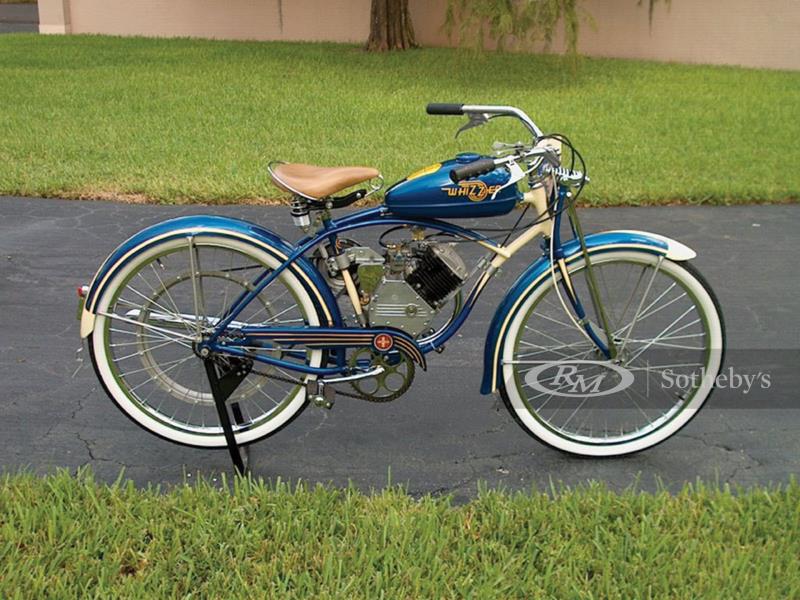

Whizzer motorbike how to#
I am positive that there were many young speed demons out there that learned a lot from these bikes, and how to handle them on the open road. As you can see the only stopping mechanism on this bike is a coaster brake that was designed to stop a bike at reasonable speeds on mostly flat surfaces. The only thing scary about these old bikes is the lack of brakes. The whizzer engines evolved over the years of production and horsepower ranged from 1 to 3 depending on the year, offering plenty of scoot for a lightweight bicycle. Basically a light weight motorcycle, these balloon tire bikes look so right with the beautiful yet small engine inside of the frame. The idea of adding an engine to a bicycle really seems to have been a genius idea for the time. The only severe rust present is the rear wheel, as the frame appears nice and straight.

The original seat is still in place although wearing ripped and weathered oil cloth. Both tires are roasted, and the rear wheel is missing a large section of rim that looks to have been lost to rust. The remaining Whizzer parts consist of an engine mount bracket, throttle cable, drive belt and drive wheel, and the “clutch” lever that put tension on the belt to transmit power to the rear wheel. The head badge is missing from this bicycle, but it would appear that it is a Monark brand bicycle. An Oxalic acid bath would do wonders for the frame, and would likely reveal a fair amount of surviving factory paint. There is a lot of rust present, but beneath all that rust there is still some factory paint. My guess is the seller is looking to flip this recent investment. One thing very apparent from this image is the auction tag that is still attached to the handlebars. Also take notice of the cool “Art Deco” handle bar stem on this bike. The Whizzer tank is in fair shape with no apparent dents or dings, and much of the water slide on each side of the tank is still in place. Check it out here on ebay out of Knightdale, North Carolina.Īlthough it may be hard to look past the missing engine, there are still some great parts on this bike. This bike can be yours to the tune of $350. Although this Whizzer converted bike is missing its engine, it still offers a great start to a Whizzer project. For young paper boys and other bicycle riders a Whizzer kit was a dream come true to having a little more speed and freedom. Whizzer began in 1939, and even continued production during WWII and into the 1950’s. Whizzer was one of those motorbike kits you could purchase to motorize your bicycle. Although there was little separation between early 1900’s motorcycles and bicycles, motorbike kits would grow to be popular for bicycles in the 1940’s.


 0 kommentar(er)
0 kommentar(er)
